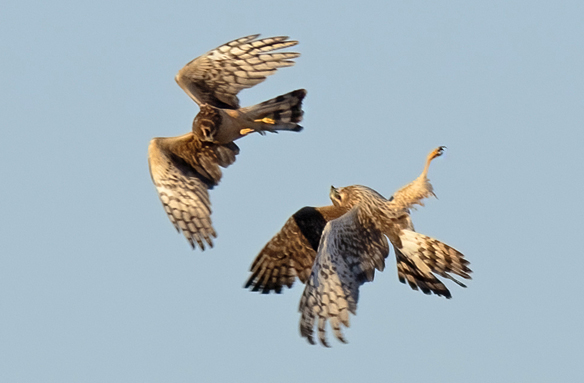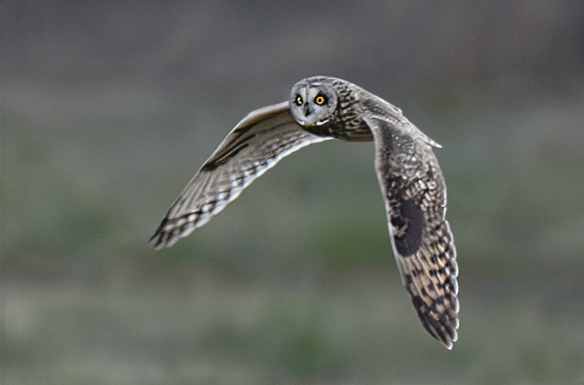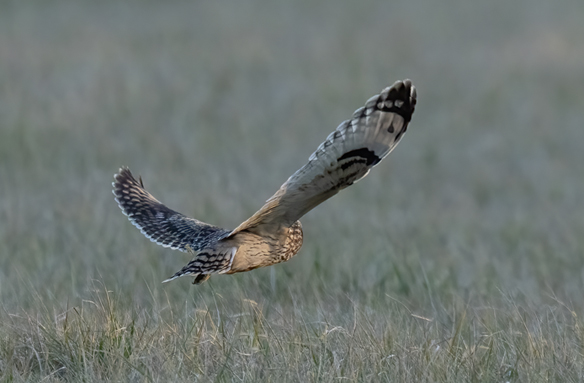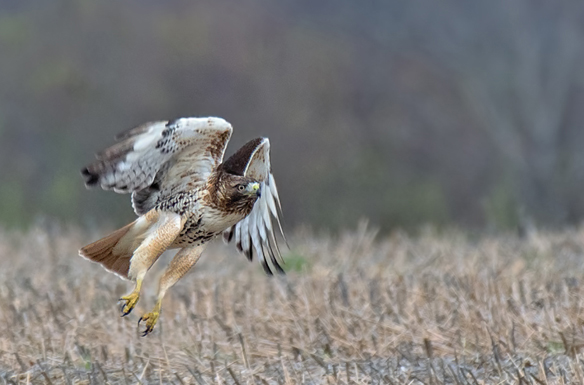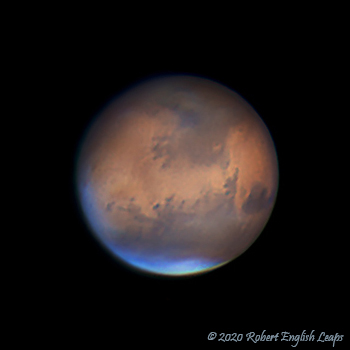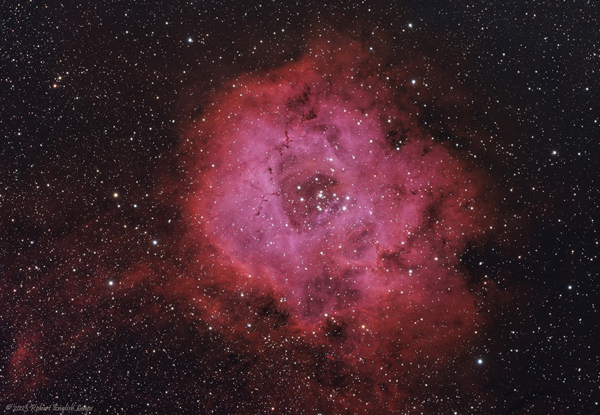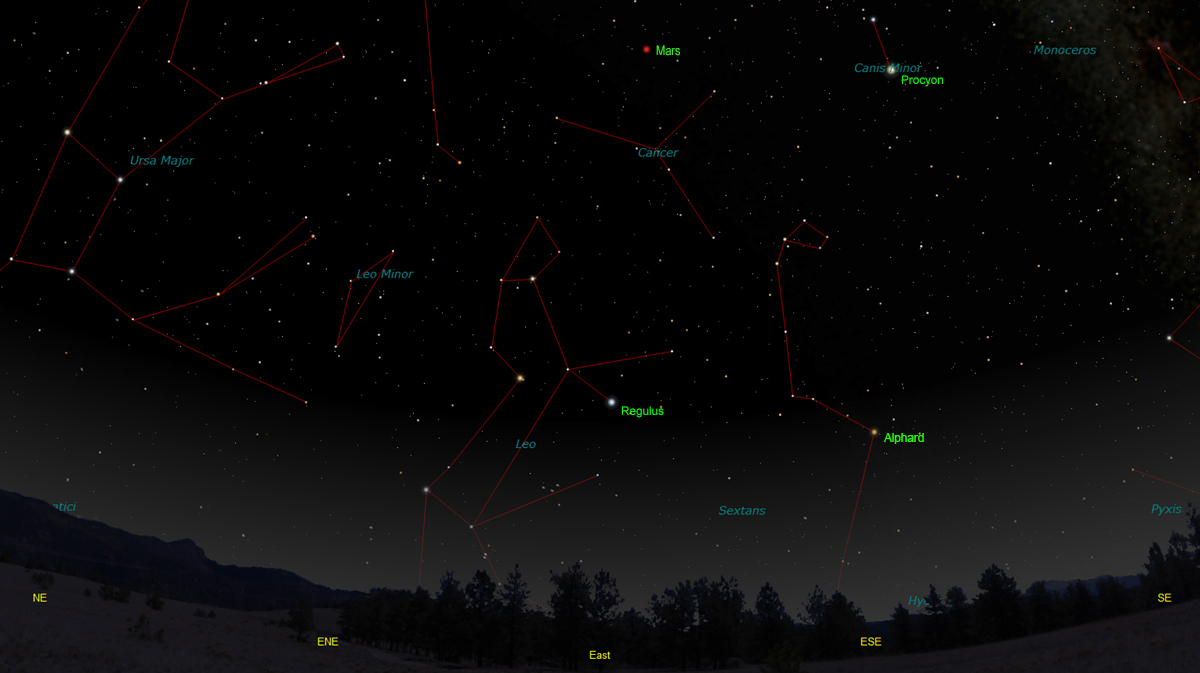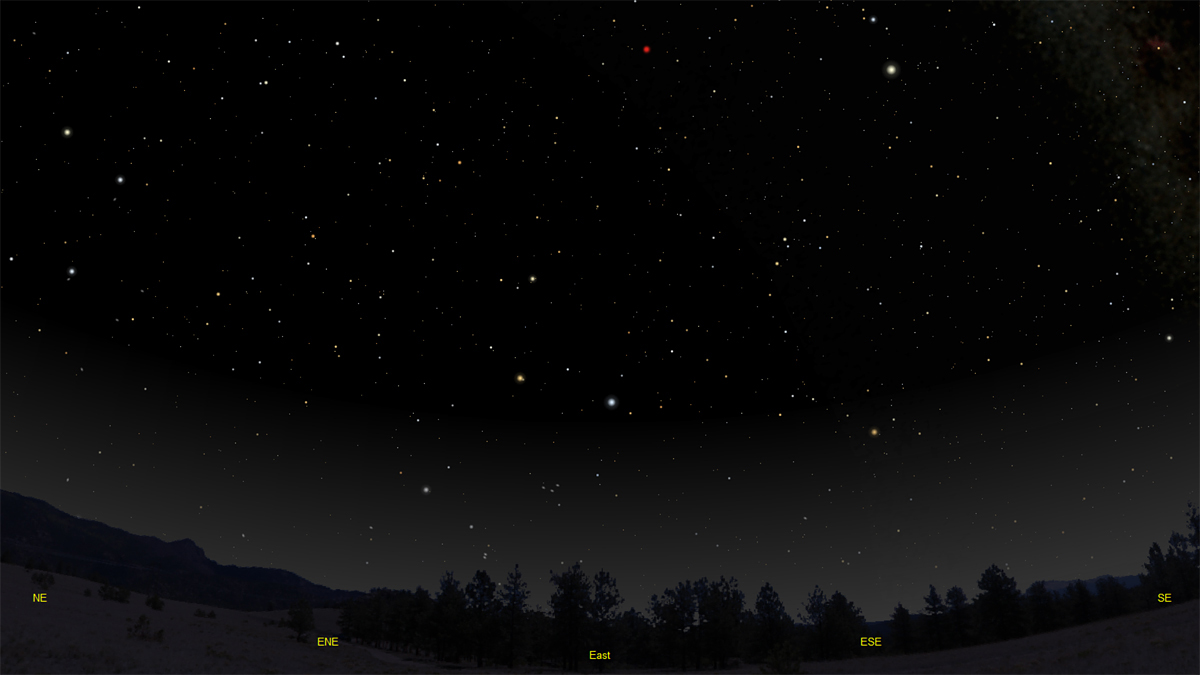The purpose of this feature is to give scout leaders, educators and naturalists an idea of some of the natural events coming up each month. We will try to cover a variety of natural events ranging from sky events to calling periods of amphibians, bird and mammal watching tips, prominent wildflowers and anything else that comes to mind. We will also note prominent constellations appearing over the eastern horizon at mid-evening each month for our area for those who would like to learn the constellations. If you have suggestions for other types of natural information you would like to see added to this calendar, let us know! Though we link book references to nationwide sources, we encourage you to support your local book store whenever possible.
Notes and Images From December 2024 Virtually all of my time in December was spent in moving from Cloudland to Nashville. I had anticipated this move for a while, but was still surprised at the shear amount of stuff that had to be boxed up and moved. So instead of natural notes and images from last month, I'm putting in several images from where we'd like to spend time in January, in winter wetlands and fields. Pictured are two Northern Harriers sparring overhead, a Short-eared Owl in flight and a departing Red-tailed Hawk .
Sky Events for December 2024: The Quadrantid Meteor Shower peaks during the early morning hours of January 3rd. Finally, a meteor shower without interference from the Moon! A lounge chair and with a sleeping bag or heavy blanket will make you more comfortable. Also consider a hot beverage. Just face north and enjoy. You can find out more about the shower here: Earth passes through perihelion, its closest point to the Sun for 2025, on January 4th. Mars is occulted by the Moon on January 13th. See below. Morning Sky: Mercury is in the morning sky from January 1st on through midmonth. Look for it above the southeast horizon about 45 minutes before sunrise. It helps to have a flat eastern horizon and binoculars to first find it, but it should become visible to the naked eye. It will be easiest to see at the beginning of the month. Evening Sky: Venus continues to dazzle in the western sky after sunset this month. It is brighter than any other star-like object in the sky, so you shouldn't have a problem locating it. Start looking about 15 minutes after sunset. Saturn is about 45 degrees above the southwest horizon at dusk at the beginning of the month. First find bright Jupiter closer to the southwest horizon, then look above and to the left for Saturn. The view is spectacular in just about any aperture telescope. It's best to view it in a telescope at twilight, as it sets before midnight. Both Saturn and Jupiter are in Aquarius.
There's a lot to see on Jupiter. Even with just a good pair of binoculars you can see Jupiter appears as a small disk rather than a star-like point. You can often see one or more of the four Galilean moons. One of Galileo's great discoveries was these four moons, though the names presently used (Io, Europa, Calisto and Ganymede) were suggested by his archrival Simon Marius. The movement of the moons is noticeable even over the course of one evening. A six-inch aperture telescope will show the Great Red Spot, a long-lasting, Earth-sized storm in Jupiter's clouds shown in the image at right, and some of the belts, though the belts have lower contrast visually than they appear in images. The planet rotates in just under 10 hours, so in a single night you can watch the Great Red Spot rotate from one side of the planet to the other.
Mars rises about and hour and 15 minutes after sunset at the beginning of the month. It's in Cancer, and you can see its position in the star chart below. Look for it below the bright stars Castor and Pollux in Gemini at the beginning of the month. The red planet reaches opposition on January 16th. It has been beautiful as it approaches opposition, glowing like a hot coal. It will reach about 14.5 arc seconds in apparent diameter at opposition. That will be enough to reveal surface details to patient observers. Mars is occulted by the Moon on the evening of January 13th. The exact time that Mars slips behind the full Moon varies with your location but for Nashville it will be 8:00pm CST. For points west of Nashville it will be a few minutes earlier. For points east it will be a few minutes later. If you are using a telescope you may be surprised at how small Mars looks compared to the Moon. Mars is just a little more than twice the size of the Moon. But it's much farther away, currently about 250 times farther away than the Moon. I've had some very memorable experiences observing Mars over the years. I love to spend relaxed time just looking for surface details. I once spotted a feature on the planet's surface that was named Nodus Alcyonius. That led me to the Greek mythology and Ovid's telling of the legend of Alcyone and Ceyx, which in turn led me to the origin of the scientific name of our Belted Kingfisher. I've never looked at kingfishers the same way since. If you are interested in the history of Mars observations, the "canals" and other Mars trivia, you can find a much more in depth discussion here. Constellations:
The views below show the sky looking east at 9:30pm CST on January 7th. The first view shows the sky with the constellations outlined and names depicted. Star and planet names are in green. Constellation names are in blue. The second view shows the same scene without labels. Look for the bright stars Castor and Pollux in the constellation of Gemini, The Twins. Compare the colors of the bright stars Betelgeuse and Rigel in Orion. Betelgeuse is a red giant and Rigel is a very hot, blue-white supergiant. If you have a telescope or binoculars, look at the center of the three "sword" stars below Orion's belt. There you will find the Orion Nebula, M42, one of the most magnificent emission nebulas in the sky. The red glow of hydrogen alpha light is visible only in very large telescopes and the nebula appears as a small greenish glow in small telescopes. Crouching beneath the feet of Orion, is Lepus, the Hare. Sirius, the brightest star in the sky, shines below Orion. Sirius is in Canis Major, the Great Dog, and for that reason is known as the Dog Star. In the late summer, Sirius rises at the same time as the Sun. Because of this, the late summer days are known as the "dog days." The faint constellation Monoceros, the Unicorn, follows Orion over the eastern horizon. It contains the Rosette Nebula, an open cluster shrouded in nebulosity. It's shown in the image above right. You can spot the brighter members of the cluster in binoculars. The brightest part of the nebulosity is faintly visible in binoculars on dark moonless nights. For more about the Rosette Nebula, see here. Low in the eastern sky below Gemini is Canis Minor with its bright star Procyon. Procyon means, "before the dog," and refers to the fact that Procyon rises just before the Dog Star, Sirius. Look below Gemini and see if you can spot the faint glow of M44, the "Beehive Cluster." This cluster is located in Cancer, the Crab. Mars is in Cancer this month, and it should be bright and beautiful.
On Learning the
Constellations: We advise learning a few constellations each month, and then following them through the seasons. Once you associate a particular constellation coming over the eastern horizon at a certain time of year, you may start thinking about it like an old friend, looking forward to its arrival each season. The stars in the evening scene above, for instance, will always be in the same place relative to the horizon at the same time and date each January. In particular, learn the brightest stars (like Regulus and Procyon in the above scene), for they will guide you to the fainter stars. Once you can locate the more prominent constellations, you can "branch out" to other constellations around them. It may take you a little while to get a sense of scale, to translate what you see on the computer screen or what you see on the page of a book to what you see in the sky. Look for patterns, like the stars of Leo. The earth's rotation causes the constellations to appear to move across the sky just as the sun and the moon appear to do. If you go outside earlier than the time shown on the charts, the constellations will be lower to the eastern horizon. If you observe later, they will have climbed higher. As each season progresses, the earth's motion around the sun causes the constellations to appear a little farther towards the west each night for any given time of night. If you want to see where the constellations in the above figures will be on February 7th at 10:30pm EST, you can stay up till 12:30am EST on the January 8th and get a preview. The westward motion of the constellations is equivalent to two hours per month. Recommended: Sky & Telescope's Pocket Star Atlas is beautiful, compact star atlas. A good book to learn the constellations is Patterns in the Sky, by Hewitt-White. For sky watching tips, an inexpensive good guide is Secrets of Stargazing, by Becky Ramotowski.
A good general reference book on astronomy is the Peterson
Field Guide,
A Field Guide to the Stars and Planets, by Pasachoff. The book retails for around $14.00.
The Virtual Moon Atlas is a terrific way to learn the surface features of the Moon. And it's free software. You can download the Virtual Moon Atlas here. Apps: The Sky Safari 6 basic version is free and a great aid for the beginning stargazer. I really love the Sky Safari 6 Pro. Both are available for iOS and Android operating systems. There are three versions. The Pro is simply the best astronomy app I've ever seen. The description of the Pro version reads, "includes over 100 million stars, 3 million galaxies down to 18th magnitude, and 750,000 solar system objects; including every comet and asteroid ever discovered." You may also want to try the very beautiful app Sky Guide. Though not as data intensive as Sky Safari, Sky Guide goes all out to show the sheer beauty of the night sky. Great for locating the planets. A nother great app is the Photographer's Ephemeris. Great for finding sunrise, moonrise, sunset and moonset times and the precise place on the horizon that the event will occur. Invaluable not only for planning photographs, but also nice to plan an outing to watch the full moon rise. Available for both androids and iOS operating systems.
Amphibians:
This is also the time to look for Tiger Salamander and Streamside Salamander egg masses. Tiger Salamanders like to deposit their egg masses on the vegetation in shallow water in small ponds and wetlands. Streamside Salamanders deposit their egg masses on the bottoms of rocks in streams. If you are looking for salamanders, always remember to carefully replace any stones you pick up exactly where you found them. Recommended: The Frogs and Toads of North America, Lang Elliott, Houghton Mifflin Co.
Archives (Remember to use the back button on your browser, NOT the back button on the web page!) Natural Calendar December 2024 Natural Calendar November 2024 Natural Calendar September 2024 Natural Calendar February 2024 Natural Calendar September 2023 Natural Calendar February 2023 Natural Calendar September 2022 Natural Calendar February 2022 Natural Calendar December 2021 Natural Calendar November 2021 Natural Calendar September 2021 Natural Calendar February 2021 Natural Calendar December 2020 Natural Calendar November 2020 Natural Calendar September 2020 Natural Calendar February 2020 Natural Calendar December 2019 Natural Calendar November 2019 Natural Calendar September 2019 Natural Calendar February 2019 Natural Calendar December 2018 Natural Calendar September 2018 Natural Calendar February 2018 Natural Calendar December 2017 Natural Calendar November 2017 Natural Calendar October 2017Natural Calendar September 2017 Natural Calendar February 2017 Natural Calendar December 2016 Natural Calendar November 2016 Natural Calendar September 2016Natural Calendar February 2016 Natural Calendar December 2015 Natural Calendar November 2015 Natural Calendar September 2015 Natural Calendar November 2014 Natural Calendar September 2014 Natural Calendar September 2013 Natural Calendar December 2012 Natural Calendar November 2012 Natural Calendar September 2012 Natural Calendar February 2012 Natural Calendar December 2011 Natural Calendar November 2011 Natural Calendar September 2011 Natural Calendar December 2010 Natural Calendar November 2010 Natural Calendar September 2010 Natural Calendar February 2010 Natural Calendar December 2009 Natural Calendar November 2009 Natural Calendar September 2009 Natural Calendar February 2009 Natural Calendar December 2008 Natural Calendar November 2008 Natural Calendar September 2008 Natural Calendar February 2008 Natural Calendar December 2007 Natural Calendar November 2007 Natural Calendar September 2007 Natural Calendar February 2007 Natural Calendar December 2006 Natural Calendar November 2006 Natural Calendar September 2006 Natural Calendar February 2006
Natural Calendar December 2005
Natural Calendar November 2005
Natural Calendar September 2005
Natural Calendar February 2005
Natural Calendar December 2004
Natural Calendar November 2004
Natural Calendar September 2004
Natural Calendar February 2004
Natural Calendar December 2003
Natural Calendar November 2003 Natural Calendar February 2003 Natural Calendar December 2002 Natural Calendar November 2002 Nature Notes Archives: Nature Notes was a page we published in 2001 and 2002 containing our observations about everything from the northern lights display of November 2001 to frog and salamander egg masses. Night scenes prepared with The Sky Professional from Software Bisque All images and recordings © 2025 Leaps
|
| ||||||||||||||||||||||||||
